Authored by Amanda Decker UF/IFAS Extension Orange County Summer Intern Graduating UF CALS December, 2022 B.S. Plant Science specialization in Plant Breeding and Genetics
Why Attract Pollinators?
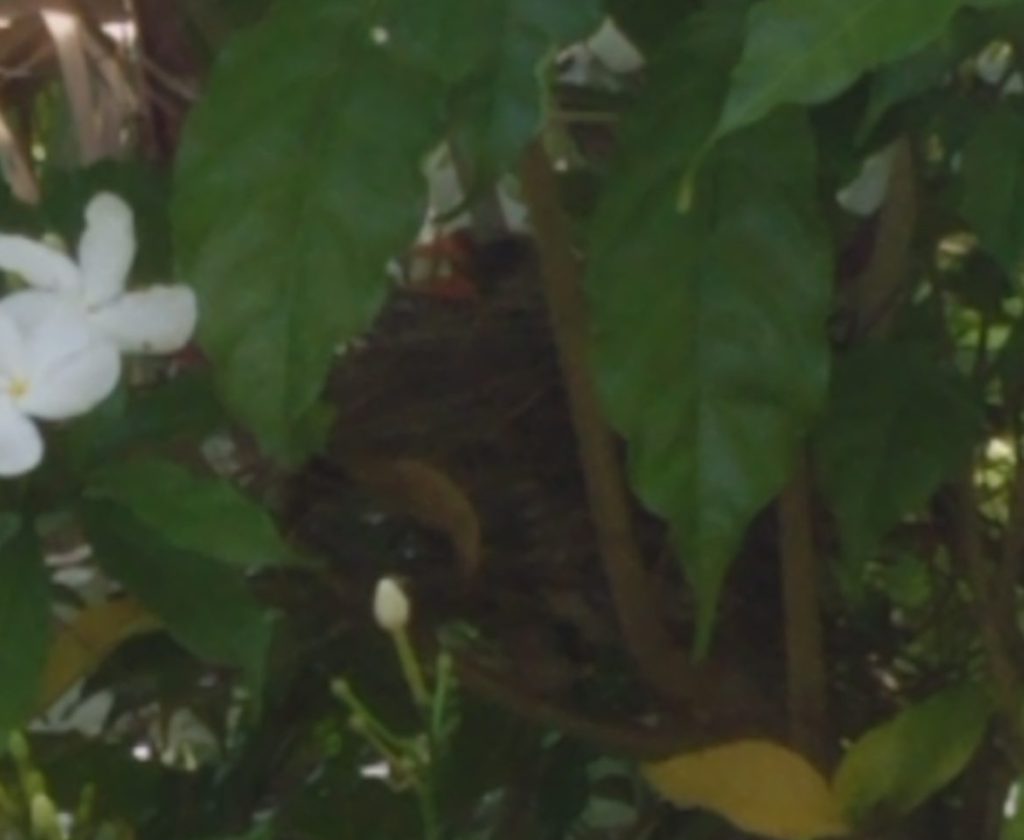

Are you looking to beautify your landscape? Are you looking to replace turf with flowers? Are you looking for a tough plant that can fill that sunny spot? How about helping pollinators? Look no further, because these options provide for you and your local pollinators! They can take the harsh Florida sun. In fact, they grow best in full sun! Pollinators (bees, butterflies, moths, hummingbirds, and other beneficial creatures) are crucial for building and maintaining a healthy landscape. They are responsible for producing 1/3rd of our food through the pollination services they provide. Without our pollinators, we would have to rely on hand-pollination, which is very labor-intensive, time-consuming, and does not guarantee fertilization. There has been growing awareness and movements regarding the plights of our pollinator pals. Here are some great options for attracting pollinators in full sun! In addition, there is a vast repository of expert information regarding our pollinators. Don’t forget that pollinator-friendly plants may also benefit your local wildlife!
Sweet Almond Bush
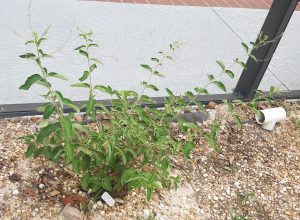
Indulge yourself in the decadent scent of vanilla and almonds while providing for pollinators! Originating from Argentina, this upright-growing shrub boasts vigor and drought tolerance. The branches have a slight weeping growth habit. It is grown for its intensely fragrant, white spiked flower clusters, which bloom from summer through fall, serving as a good nectar source for bees and butterflies. It is important to note that the flowers bloom on new growth. Beware, this shrub means business; it can grow up to 12 feet tall and wide if allowed. Pruning between bloom cycles will increase blooms and is recommended for denser growth. It is a perennial in zones 8-9 and evergreen in zones 10-11. Sweet almond bush prefers average to dry, well-drained soils and grows optimally in full sun. It can be grown in containers, borders, or as a specimen; however, keep its size and consequent maintenance needs in mind.
Chaste Tree
This tree has caused much confusion due to its lilac-like blossoms. It is often mistaken for a lilac tree! Alas, lilacs do not grow in Florida. However, the chaste tree is happy to fill in. It is native to the Mediterranean region. The chaste tree is not considered invasive, but seeds may colonize nearby and become weedy. The lavender, fragrant spikes of showy flowers bloom from late spring through fall. During this time, it is awash with pollinators, including butterflies, bees, and even a few hummingbirds! In fact, it encourages excellent honey production of neighboring hives. Don’t like purple? No problem! There is a wide variety of chaste tree cultivars that offer different bloom colors. The gray-green palmate leaves are even sage-scented. This showy tree is an attractive centerpiece in a landscape bed or a large container. It will thrive in almost any soil that has good drainage. It grows optimally in full sun and can tolerate moderate salt air. This deciduous tree grows 10-20 feet high and wide. If pruning is desired to control the size or shape, it should be done in winter since it is deciduous and the blooms form on new wood. The chaste tree is highly drought tolerant once established. In addition, it is cold-hardy from zones 7b-11.
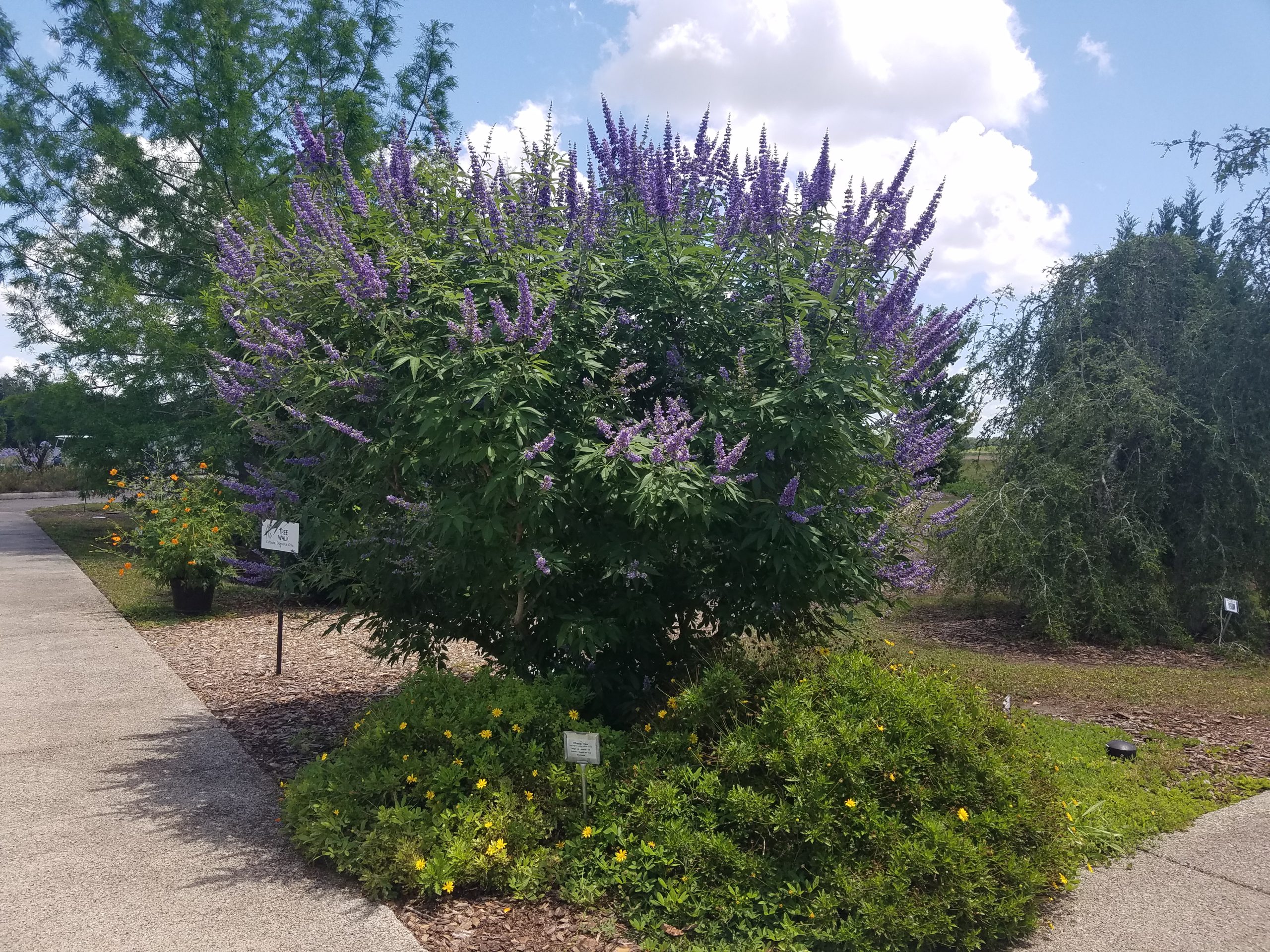

Lion’s Mane
Lion’s mane is an often underutilized perennial that is a roaring success in Florida’s climate. It is often admired for its bright, colorful tubular flowers that attract bees, butterflies, and hummingbirds. The clusters of fuzzy, orange flowers bloom from late summer through fall. It is native to southern Africa but can be grown in zones 8-11. In zones 8-9, it may freeze to the ground in winter, but it will come back with a vengeance in springtime. Mulching the crown in the winter will help ensure the plant survives. It prefers a location in full sun but will tolerate part-shade. In addition, it requires well-draining soil. This plant is tolerant of extreme heat, drought, and dry soils. It can reach 5 feet tall and 4 feet wide.

Blue Porterweed
Blue porterweed, also known as Stachytarpheta jamaicensis, is often included in the “must-have” list of a butterfly garden enthusiast. Its small, mystic-blue flowers serve as a nectar source for many butterfly species while flowering in the summer. It is hardy from zones 9B – 11. This low-growing, sprawling wildflower serves as a beautiful, perennial groundcover in dry, sunny areas. It is drought-tolerant and moderately salt-tolerant. It is common in butterfly gardens and conservatories but can be grown well in container gardens. Blue porterweed can be pruned to maintain desired size and shape. It will thrive in most soils, including calcareous soils, as long as they are well-draining.
However, it is important to do your research with this selection as it is easily mistaken for the non-native Stachytarpheta cayennensis, a Category II listed invasive species. In addition, at least five species and various cultivars are sold at retail stores, including Stachytarpheta urticifolia. Beware, these may grow larger, take over your yard, or attract fewer pollinators.
Blazing Star
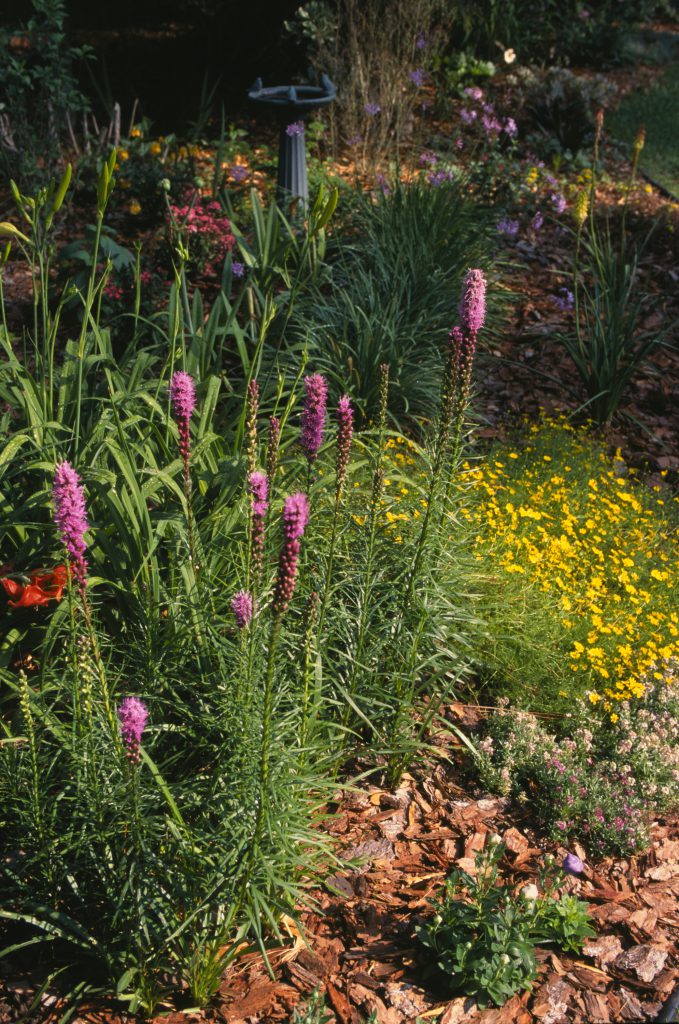
Blazing star is a tough, beautiful perennial wildflower that showcases bright, showy purple flower spikes in fall. It has a tall, slender growth habit reaching up to 5 feet tall. Blazing stars have green, grass-like leaves that will shift to a rich, bronze color as the season changes to fall. This is an excellent option for adding color and flair to your landscape. It will grow best in full sun and well-draining soils. They create a stunning display when planted in mass. However, consideration should be given to lodging due to their height. They may require support such as staking to remain upright. They will die back after blooming, but do not worry because they will reappear in spring and are reliable re-seeders! Blazing stars provide many benefits for pollinators and wildlife. The dead stems shelter insects, thus attracting birds. They are excellent nectar sources that will attract various pollinators. In addition, birds feed on ripening seeds. The flowers also hold up well when cut and dried or enjoyed in a vase. There are at least 13 species and several hybrids available that are suitable for zones 8-10B. The selections boast a choice of varying shades of purple or white. In addition, some blazing stars have compact growth habits or stronger stems. Blazing stars are drought-tolerant, requiring little to no irrigation once established.
False Rosemary
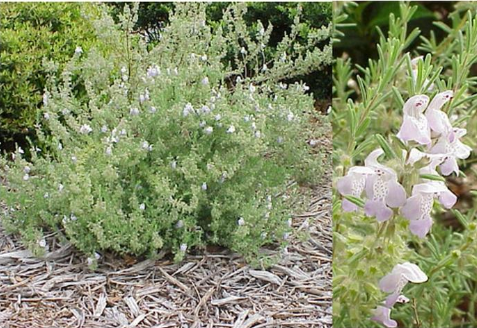
False rosemary is an evergreen, sprawling shrub that rewards gardeners with fragrant flowers. False rosemary may look like its namesake cousin, but this is not the rosemary used for savory cooking spices. The leaves emit a minty scent when they are crushed. It is hardy from zone 8A-9B and thrives in extremely dry, sandy soils. False rosemary can grow 2-3 feet tall and wide. Plus, this hardy plant grows best in full sun. The light purple flowers create a display that lasts from March through November, attracting many pollinators. Bees are its most prominent pollinator visitor. The leaves are short and needle-like, featuring silvery-green tones. It is also drought-tolerant, boasting extreme adaptability in the landscape.
Coral Bean
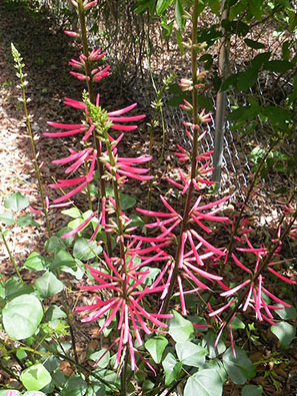
Coral bean puts on quite a unique show that begins with its red, tubular flowers borne on tall stalks in spring. These flowers draw a parade of pollinators, including hummingbirds and butterflies. The seed pods begin to mature in summer. The pea pods turn dark, almost black. They will then split open, revealing shiny, scarlet red seeds. The small animals and birds that enjoy this tasty treat rejoice! However, be careful as they are extremely poisonous to humans and animals! Coral bean grows as a large perennial that reaches 6 feet tall before freezing back to the ground in winter. It is gorgeous when in bloom; however, it may look sparse or ragged for the rest of the year. Therefore, coral bean can be utilized in the back of a mixed border so you can enjoy the show while tucking it away afterward. It tolerates a wide range of soils. It grows best in fertile, well-draining sandy soil in full sun.
I hope this has brought forth some options you may not have heard about for the Sunshine State! I encourage you to utilize the resources below to guide you toward your ideal pollinator-friendly landscape.
Additional Resources:
3 Additional Pollinator Plants
 0
0
